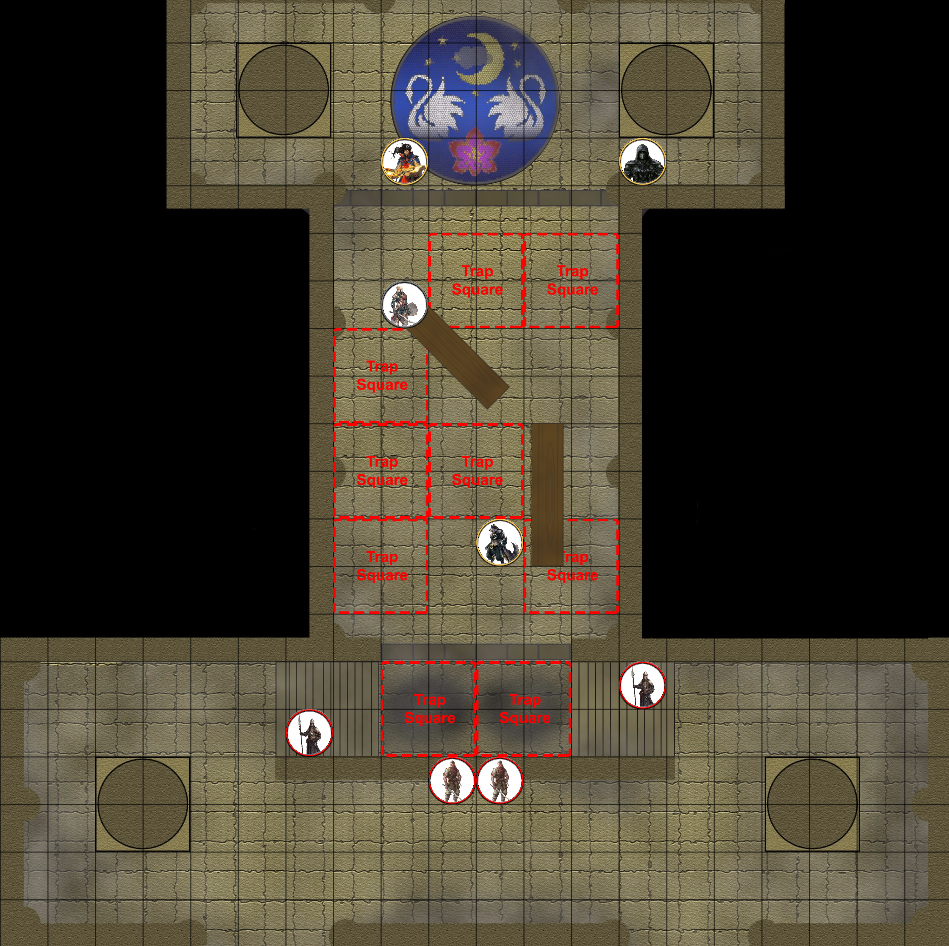Applying Branching Narrative to Dungeons and Dragons: Insuring Players Choices have Consequences
Over the past several years I have lead many Dungeons and Dragons or other Roleplaying parties. These campaigns have varied in complexity from quick little one-shots to multi-year campaigns that saw the loss of many a character, the rise of kings, and the annihilation of nations. In my most recent campaign, I have decided to apply some of my game design knowledge and my love of branching narrative to create a simple, rough road map for the many quests and bounties my players will encounter. While Dungeons and Dragons is a cooperative, storytelling experience, having this road map has allowed me to make my quests more directed and provide players an eventual payoff where their choices impact the big final battle at the end.
For a brief bit of context, my players are currently level 4 in a 5th edition campaign of my own design. The players have just completed saving Bane Knight Dalan from some Bandits. They are returning to their current home of Lortham's Peak, a small lumber town on the edge of the frontier. Just a few weeks ago, the town was a attacked by a feral werewolf. After that, strange things began occurring such as the local lumberyard experienced some trouble (but the players did not investigate) and the number of wolves in the area seem to have increased. Only time will tell if the players will be ready when the tribe of werewolves attack.
Now, while some might be saying, "But isn't Dungeons and Dragons always leading to choices and consequences?" Not in every campaign and not always as structured. It is true that Dungeon Masters often lead players to make decisions either for better or for worse, but these decision generally focus on either small things or earth-shattering events. The system illustrated above works to outline a rough sketch of past and upcoming events that will either positively or negatively impact the big, final battle for this arch as well as enemy behavior and stats.
It is important to note that this is a rough sketch as my players in other campaigns have proven. Dungeons and Dragons was never intended to be a railroad experience, driven by both players and Dungeon Master. If the players find other ways to build up their defenses, for example they send out to the nearby Dwarven city of Gold Anchor, then I will happily incorporate that into the game. Additionally, while I am more than willing to let players make mistakes, it does not mean I will put them in a position where they are hopelessly doomed. There is always a need for give and take especially with the players at the mercy of the dice. For an example, one decision the players might make is to help the local cleric, Father Obden, go to a nearby city and help him with a dear friend's illness. If the players do this, Father Obden will see the state of his friend and decide to stay behind, leaving Lortham's Peak and the party without his healing light. To avoid this, the Father Obden will tell the players of a blood-filled dream he had and of a general feeling of foreboding he has had for some time. This is to clue the players into maybe wanting to insure Obden returns with them. Should Obden still decide to stay with his friend, he will repay the party with a holy symbol which grants the user a healing ability. Not as useful as having an actual cleric, but now one of the players could use this as a narrative moment to multi-class into cleric.
Ultimately what this chart allows me to do is allow my players' various actions to impact the world in more than just token ways. Their actions directly impact how dangerous their final enemies will be, making the world be that much more immersive and feel that much more alive.
Using Roll 20: Creating Combat Encounters
Throughout a majority of my Dungeon Master career, I have had the privilege of sitting at the table with my would-be-adventurers. However, with this newest campaign, my team is spread all over the country meaning I needed to learn a new way of communicating important information and running combat. Roll 20 is a browser-based RPG simulator where people can upload maps, create worlds, and even play music. Through Roll 20 I have created some truly terrifying and yet fun combat encounters that forced my players to think on their feet and lead to plenty of epic moment.
Whenever I sit down to create an encounter, random or otherwise, I like to go through a series of questions so the combat is challenging and never grows stale. Some of these questions are:
Where are the players currently?
Does this combat need to be challenging or easy?
Is there a new idea, environmentally or otherwise, that I want to try?
What type of enemies do my players struggle with?
What type of enemies do my players easily defeat?
How can I use the environment or enemies to convey necessary information?
What would these enemies do to make this space more to their liking/ more defensible?
Who has not had the chance for an epic moment recently?
Have the players encountered ______ before?
With these questions and others answered, I develop an encounter or series of encounters that fit the answers. Below you can find a gallery of some of my favorite combat encounters from this current campaign.










